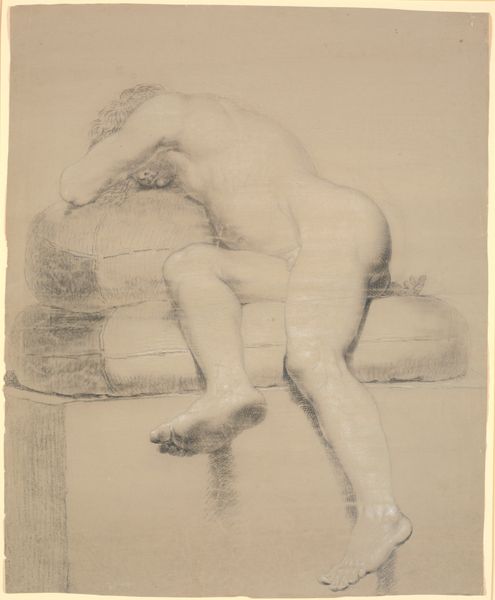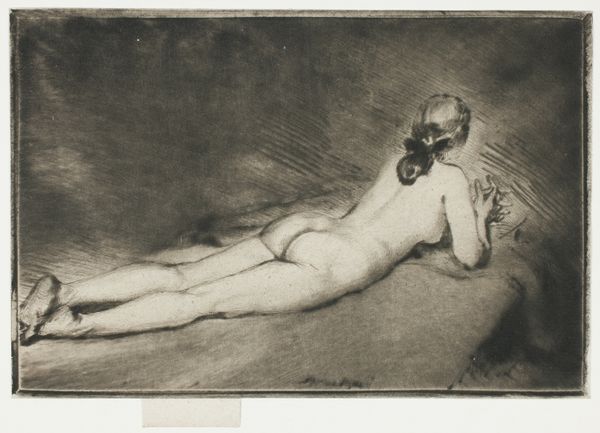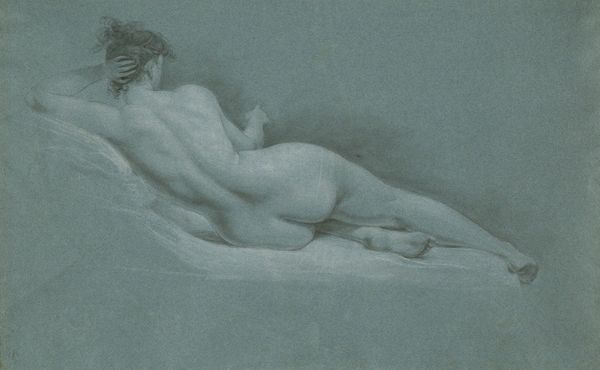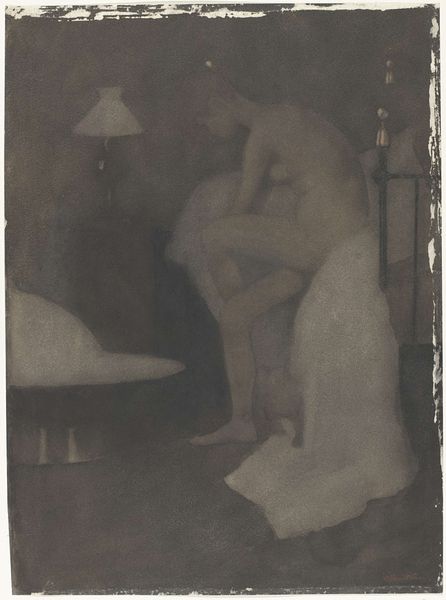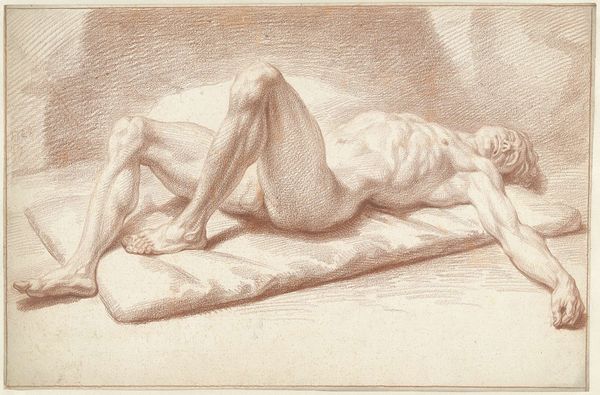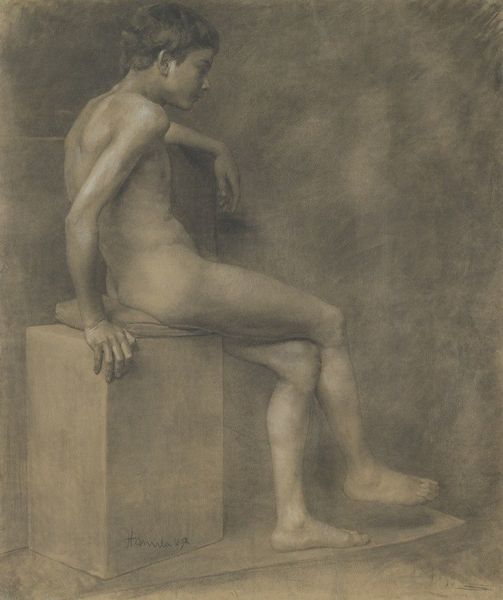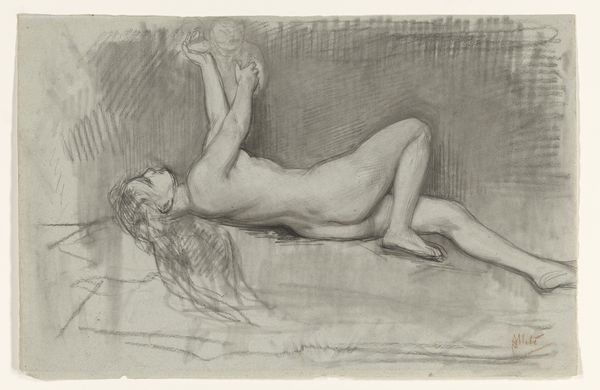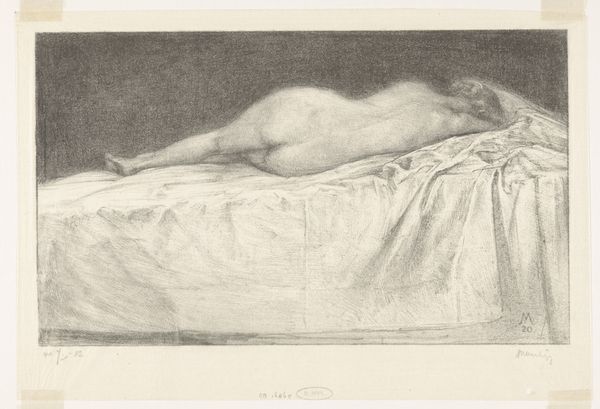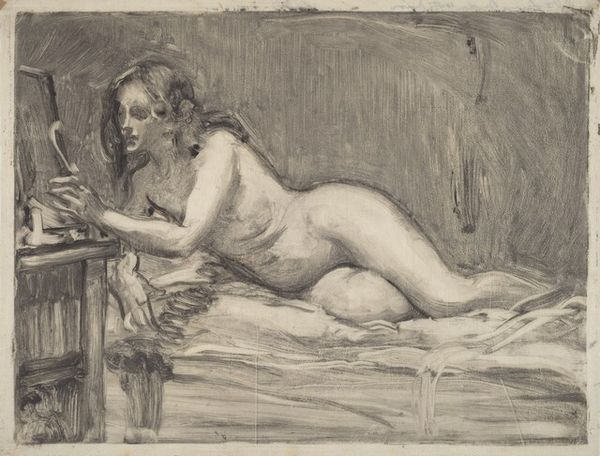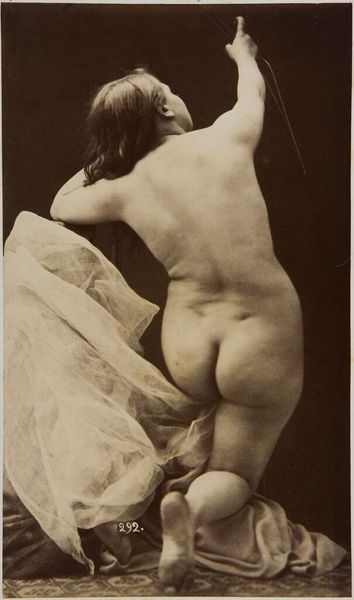
drawing, charcoal
#
portrait
#
drawing
#
medieval
#
charcoal drawing
#
form
#
line
#
portrait drawing
#
charcoal
#
academic-art
#
nude
#
realism
Copyright: Public Domain: Artvee
Curator: Let’s consider this intriguing piece, "Lying female nude," attributed to Jozef Hanula. It’s rendered in charcoal, capturing a reclining figure. Editor: It has an immediate impact; the figure seems both vulnerable and commanding in her repose. The charcoal lends itself well to creating a very somber, perhaps even melancholic mood. The soft shading emphasizes the figure’s form in a really tactile way. Curator: Indeed. Hanula's academic training shines through here. Notice the detailed rendering of the figure. The treatment clearly aligns with the stylistic conventions of the era, where careful observation and technical skill were highly valued. How might its consumption within academic circles shaped its form and reception? Editor: Definitely. Considering the materiality, charcoal as a medium allows for rich tonality, which is exploited skillfully here, you know. And it's worth reflecting on the economic dimensions too: the accessibility of charcoal likely facilitated studies like these. Were there restrictions placed on materials in art at the time? That could shed further light on who got to create what. Curator: It would, and context is vital. Nudes like these provided academic artists opportunities to master depicting the human form, often intended for larger history paintings. They reflect societal views about beauty and the body and, of course, were predominantly viewed through a male gaze at that time. How does this portrayal shape contemporary interpretation? Editor: The very act of creating it reveals hierarchies, doesn’t it? Hanula is recording something specific with clear artistic intention with affordable materials. Perhaps this artist’s work shows an alternative expression through those economic conditions? Is this nude reclining or surrendering? Is there a tension in the labor of portraying such vulnerability for male admiration while possibly alluding to underlying sociopolitical themes that only art allows us to speak of? Curator: Certainly food for thought as we consider Hanula’s legacy. It prompts us to question the structures and politics embedded within artistic practices. Editor: Precisely. This piece gives insight into art's material underpinnings and challenges us to reflect on the ongoing interplay between medium, message, and context.
Comments
No comments
Be the first to comment and join the conversation on the ultimate creative platform.
